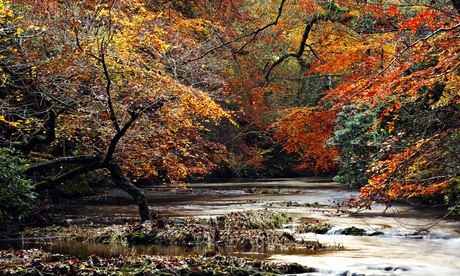
Like Helen Macdonald’s H is for Hawk, and Richard Mabey’s Nature Cure before it, Katharine Norbury’s The Fish Ladder is at heart an examination of the consoling effect of the natural world on human grief and torment. Having lost a longed-for baby she was carrying, Norbury sets out, sometimes accompanied by her young daughter, Evie, on a series of walks, attempting to follow various rivers from the sea to their source. The spur for all this watery tramping is quite specific. She has fallen in love with Neil M Gunn’s novel The Well at the World’s End, whose hero, Peter Munro, wanders impulsively in Scotland’s wildest places in search of the nameless spring of the book’s title. Thanks to this, her most significant expedition sees her travelling north of the border to Caithness on the trail of the source of the Dunbeath Water, the inspiration for another of Gunn’s books, Highland River. Norbury cannot wholly account for her yearning to see this unknown place; all she knows is that, bafflingly, it feels as acute as homesickness.
Norbury’s miscarriage is not the only source of her pain. In the course of The Fish Ladder, we read of the death both of her father, and of a close friend; of her mother’s serious illness; of the author’s treatment for a rare form of breast cancer. Far more significant to the book’s structure, though, is the fact that Norbury was adopted (her memoir includes, towards its end, an account of her attempts to trace her birth family). This is the source of a different kind of grief, and perhaps of the generalised homesickness she often feels. In one of many flashbacks in the book, she describes the uncanny day she found herself on Crosby Beach looking at the human sculptures by Anthony Gormley whose collective name is, appropriately, Another Place. The sands and their surroundings feel strangely familiar to her and, sure enough, she soon stumbles on a convent. Amazingly – miraculously – it turns out to have been the place she was born, her first name Marie Therese after the nun who delivered her. The connection between water and life, the reader now grasps, is for Norbury a visceral and impossibly complicated thing. As I turned the pages of her book, I couldn’t help but think of The Tempest, and of Ariel’s song: Full fathom five thy father lies…
In addition to her trip to Dunbeath, Norbury’s journeys take her to Spurn Point in east Yorkshire, to St Mary’s Well on the Llyn Peninsula, and to the River Severn, and she writes about them all very well. At Spurn Point she hears the noise made by marsh gas, “a popping sound, as though a hundred mouths sucked bull’s eyes”. Driving through Wales, she sees three fox cubs bouncing down the hillside like “hot loaves knocked out of their tins”. Camping tentless alone in Scotland, she wakes to find a stag standing just behind the crown of her head: “His antlers filled the darkness over me; it was like looking at the sky through leaded panes.” She is good on (and honest about) the fear one often feels as a woman walking alone: the way a lone male can make the blood seem suddenly to fizz; the way that, on catching sight of one, a dozen tiny calculations must be made. I liked her pluck, her determination, her stoicism, even if I did sometimes worry she was striding out unprepared (her idea of a packed lunch is a few morsels of cheese and chocolate, and a flask of yesterday’s leftover Rioja).
But about the structure of her book, its rhythm and its shape, I was less certain. For a memoir that is so much about water, its narrative, stop-start and heavily reliant on reminiscence, does not always flow. There are moments, too, when it feels forced; several of her digressions – her trip to Fountains Abbey in Yorkshire, for instance – are unnecessary, beside the point (her readers will already be very well aware of how the National Trust likes to run its sites; most, too, will know the basics when it comes to the dissolution of the monasteries). Every moment she spends noting the differences between a Speyside hotel as she knew it as a child and the way it is today are, for me, moments wasted.
In this sense, Norbury is the victim of her own success: the reader longs for her to get outside, and do what she does best, her eye feasting on the landscape. For my own part, I wanted The Fish Ladder to work on me the way Gunn’s books had on her, for it to induce that piercing nostalgia for places unknown that she describes so very well. But in her detours, she not only loses sight of her book’s central themes, she allows its captivating drama to dissipate. It rises and sometimes vanishes altogether, like mist in early morning sunshine.
The Fish Ladder is published by Bloomsbury Circus, £16.99. Click here to buy it for £13.59

